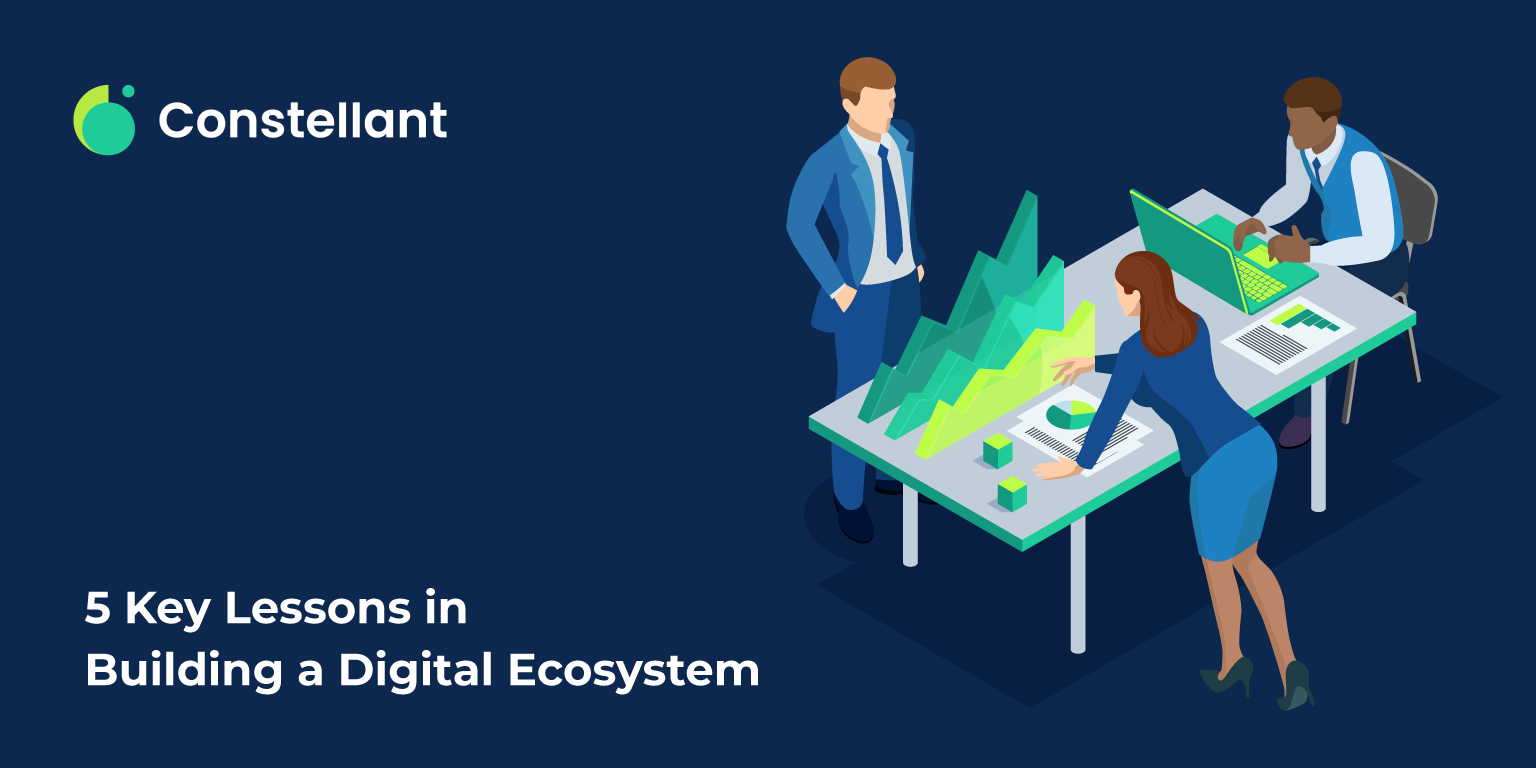The only ecosystem blog you'll ever need

Five Key Lessons in Building a Digital Ecosystem
March 3, 2020
The topic of Digital Platforms and Ecosystems is becoming a non-negotiable item on almost every corporate board’s agenda. Why? Because these models dominate our daily lives as consumers, employees, and citizens. In recognizing this, the World Economic Forum recently published a comprehensive briefing paper on Digital Platforms and Ecosystems to demonstrate that soon, every touchpoint we have will be enabled by platforms and ecosystems.
Team members from the World Economic Forum, in collaboration with Deloitte, interviewed senior executives of 15 leading digital platform and ecosystem firms across various business-to-business and business-to-consider industries, some of which include: Alibaba Group, Uber Technologies, SAP SE, Booking.com, Huawei Technologies, and GE Digital. While each platform is unique, there were consistent lessons to be learned from studying these successful platforms and ecosystems. We’ve broken down our favorites for you here and added how EMaaS provides support along the way.
(1) Clearly define the platform: It may sound obvious but articulating a unique value proposition prior to building a platform is critical to the platform’s success.
- Some questions to consider:
- What pain point am I resolving for the final customer?
- How does my offering compare to others’, seen from the customer’s perspective?
- How EMaaS can help:
- Ecosystem Development Strategy: As part of Constellant’s Managed EMaaS offering, the Constellant team, armed with 18+ years of deep domain expertise, will assist with ecosystem strategy formulation before software implementation starts.
(2) Build supply in proportion to demand: While building the ecosystem, stay focused on the needs of the customers and find suppliers who are able to fulfill their demands.
- Some questions to consider:
- How is each part of the ecosystem focused on the participants instead of focused on the parent company?
- How can I scale the ecosystem as the needs of the customers grow and change?
- How EMaaS can help:
- Scalable Software: With Constellant’s Ecosystem-in-a-Box software platform, you can deliver scalable full lifecycle management to multiple types of ecosystem stakeholders – across their lifecycles. This software includes four unique modules structured to grow with your ecosystem.
(3) Take a staged approach: Building an ecosystem takes time and resources. Find ways to scale quickly by optimizing each stage of the ecosystem participant lifecycle.
- Some questions to consider:
- What is the ultimate goal of my overall ecosystem participation?
- What do I seek to accomplish through their participation?
- How can the participation of ecosystem participants be optimized?
- How EMaaS can help:
- Experience-Driven Software: With Constellant’s Ecosystem-in-a-Box software platform, you can deliver scalable full lifecycle management to multiple types of ecosystem stakeholders – across their lifecycles. The software can help you optimize processes in the following stages:
- identification & outreach
- acquisition & onboarding
- organization & education
- support & communications
- value development & review
- value showcasing & exchange
- retention & support
(4) Shift the mindset and be agile: Successful platform business are not afraid to fail when it comes to trying new things. While scaling an ecosystem, experiment until you get it just right.
- Some questions to consider:
- What data and analytics capabilities must I have in place to test ecosystem experiments?
- Does the culture of my company support agile experimentation?
- What cultural shifts need to take place to support creativity and testing?
- How EMaaS can help:
- Configurable Software: With Constellant’s Ecosystem-in-a-Box software platform, you can make instantaneous changes that allow you to test new models, creating new revenue streams, quickly without making large investments of capital and resources. Additionally the software’s robust data and analytics capabilities allow you to monitor the successes of each experiment.
(5) Recognize that scalability of technology is key: The participants of the ecosystem are clearly what make the ecosystem thrive; however, equally as important is the supporting infrastructure. This must scale in proportion to the increasing demand (number 3). Furthermore, user requirements will become more complex as your ecosystem grows.
- Some questions to consider:
- What key metrics should be considered as I scale my ecosystem?
- How quickly do I need to scale my ecosystem?
- What resources do I have in place to facilitate growth?
- How EMaaS can help:
- Scalable Software: With Constellant’s Ecosystem-in-a-Box software platform, you can deliver scalable full lifecycle management to multiple types of ecosystem stakeholders – across their lifecycles. This software includes ecosystem modeling, analysis and forecasting that gives you the ability to analyze actual ecosystem performance data and predict future ecosystem performance.
Interested in learning more about Constellant’s robust EMaaS offering? Request a demo today.
Source: Deloitte analysis, WEF Platforms and Ecosystems: Enabling the Digital Economy

